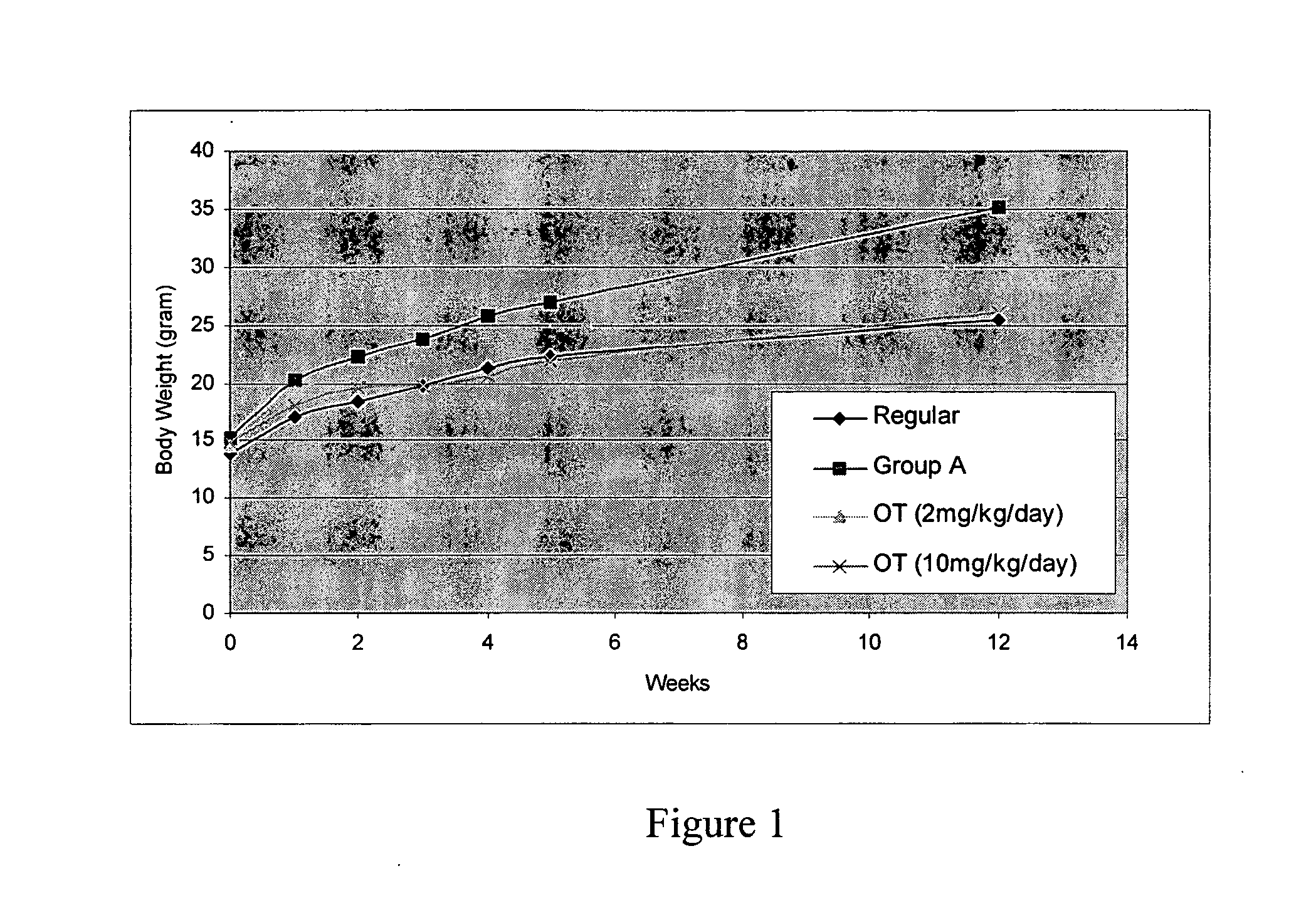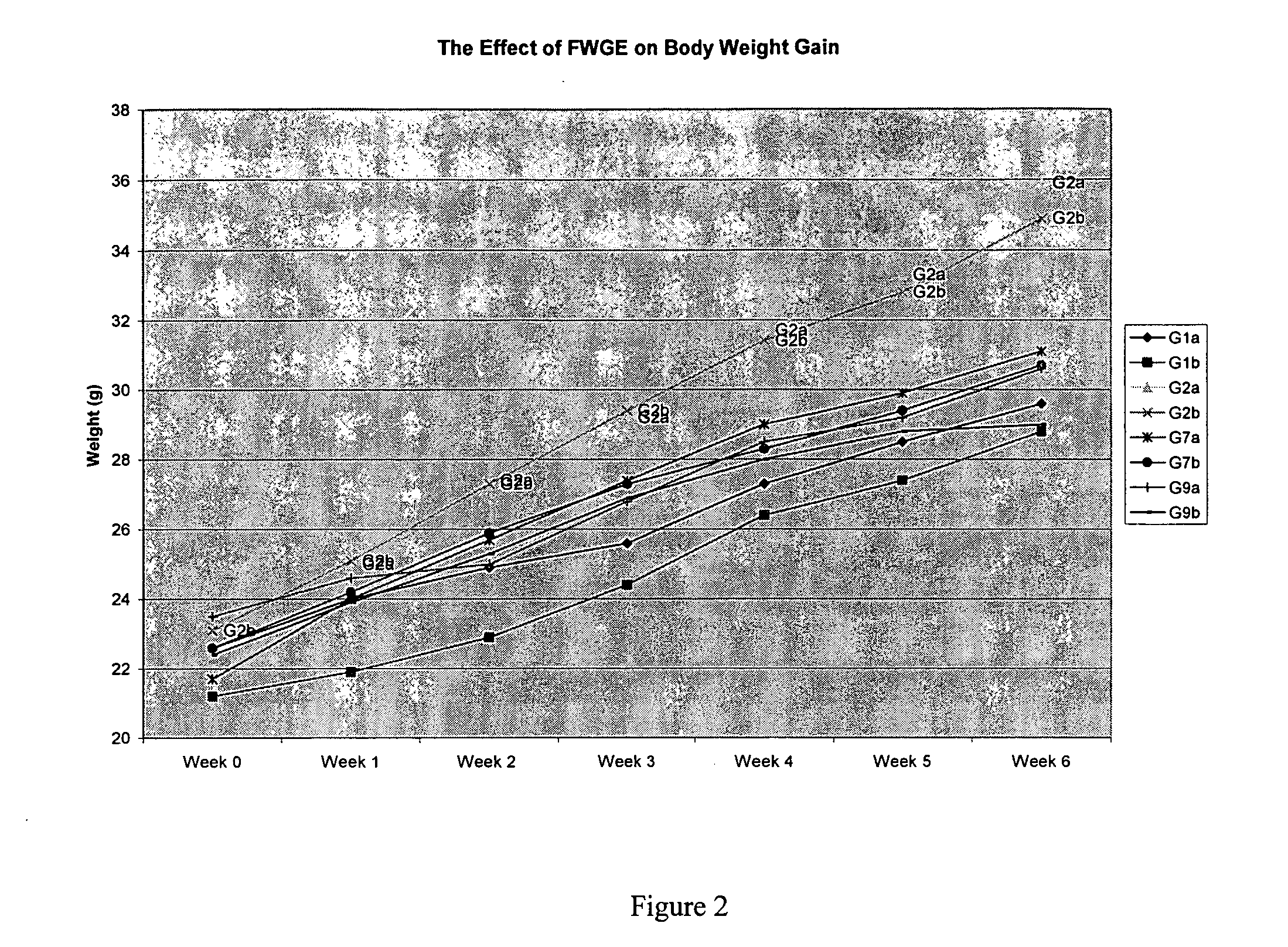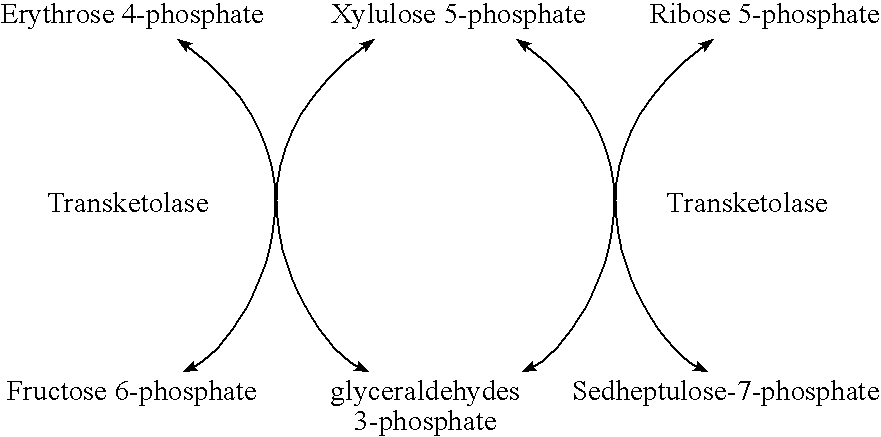Method for preventing or treating obesity by modulating the activities of the pentose phosphate patway
a pentose phosphate and activity-modulating technology, applied in the direction of antibody medical ingredients, genetic material ingredients, plant/algae/fungi/lichens ingredients, etc., can solve the exact mechanisms by which environmental factors affect the metabolic pathways that directly or indirectly impact obesity, and achieve only limited or short-term effects of non-pharmacotherapy methods
- Summary
- Abstract
- Description
- Claims
- Application Information
AI Technical Summary
Problems solved by technology
Method used
Image
Examples
example 1
Treatment with a TKT Inhibitor Prevents Obesity in Mice
[0069] Adult mice fed with a high fat diet showed normal growth when treated with a TKT inhibitor, while the control group without inhibitor became obese. Increased TKT enzyme activity was observed in mice fed with a high fat diet, indicating that increased TKT enzyme activity could contribute to the overproduced body fat.
[0070] Oxythiamine (OT) has been widely used as a TKT inhibitor to study the relationship between PPP and tumor proliferation process in cultured tumor cell lines and in vivo.
[0071] The histotoxicity of OT was checked on some vital organs such as the liver, heart and kidney of mice hosting Ehrlich's tumor. These mice were treated with a dose of 400 mg / kg / day of OT. No signs of toxicity were observed in all these tissue as compared to the controls.
[0072] D12492 is a very high fat containing diet (with 60 kcal % fat), and has been widely used to induce obesity in rodents. The composition of this diet is shown...
example 2
Restricted Supply of Thiamine Results in Preferential Reduction of Body Fat Mass in Mice
[0078] To test the effect of thiamine supplementation on TKT enzyme activity on adipose tissue, the AIN-93M diet (for composition, see Table 3 below), without thiamine, was used to feed C57BL / 6 mice for two to three weeks in order to create thiamine insufficient conditions. As previously reported, continued feeding of animal with non-thiamine diet for three or more than three weeks will cause a thiamine deficiency disease similar to what observed in humans. (Kril, J. J. Metab Brain Dis. 11:9-17, 1996; Langlais et al., Metab Brain Dis. 11:19-37, 1996.) Thiamine concentration in vivo, especially regional aggregation of thiamine are known to stimulate TKT activity, thus PPP activity. Thiamine aggregation has been reported in tumor patients, especially with malignant tumors. Most actively synthesizing cells, such as tumor cells, have a strong ability to attract or aggregate thiamine.
TABLE 3Composi...
example 3
FWGE as TKT Inhibitor Reduces Body Weight Gain in Mice
[0081] Fermented wheat germ extract (FWGE) is nontoxic, strongly inhibits the PPP, and sometimes has been used as a supplement with other cancer therapies (Garami et al., J. Pediatr. Hemotol. Oncol., 26, 631-635, 2004). Our results and published data have revealed that it has TKT inhibitory activity (Comin-Anduix et al., J. Biol. Chem. 277, 46408-46414, 2002). Our initial results also indicated that mice treated with OT as low as 2 mg / kg / day can reduce the progression of obesity development significantly. In contrast, 100-400 mg / kg of OT has been successfully used to treat tumors in animals (Boros et al., Cance Res., 57, 4242-4248, 1997; Rais et al., FEBS Lett., 456, 113-118, 1999). These data indicate that products having mild activity, particularly natural or formulated plants and foods, might be effective enough for obesity prevention. The preliminary data suggest that FWGE should inhibit TKT adequately to show an effect. The...
PUM
| Property | Measurement | Unit |
|---|---|---|
| body weight | aaaaa | aaaaa |
| mass | aaaaa | aaaaa |
| size | aaaaa | aaaaa |
Abstract
Description
Claims
Application Information
 Login to View More
Login to View More - R&D
- Intellectual Property
- Life Sciences
- Materials
- Tech Scout
- Unparalleled Data Quality
- Higher Quality Content
- 60% Fewer Hallucinations
Browse by: Latest US Patents, China's latest patents, Technical Efficacy Thesaurus, Application Domain, Technology Topic, Popular Technical Reports.
© 2025 PatSnap. All rights reserved.Legal|Privacy policy|Modern Slavery Act Transparency Statement|Sitemap|About US| Contact US: help@patsnap.com



